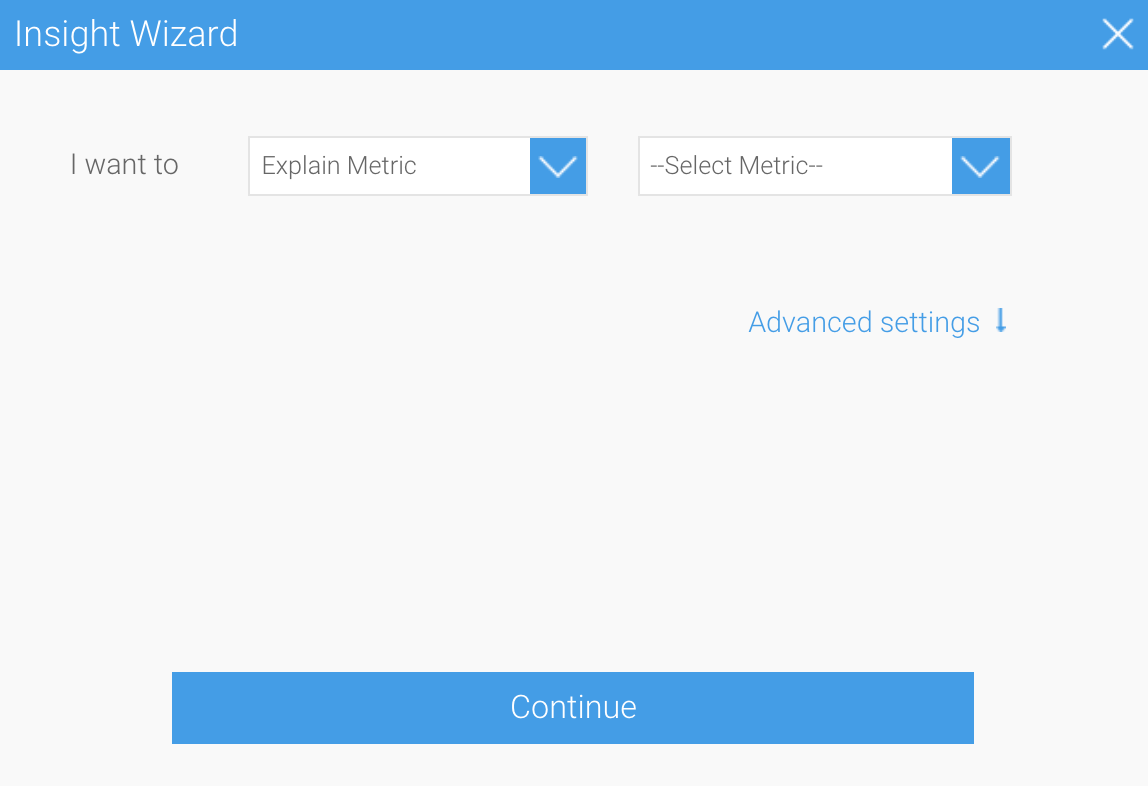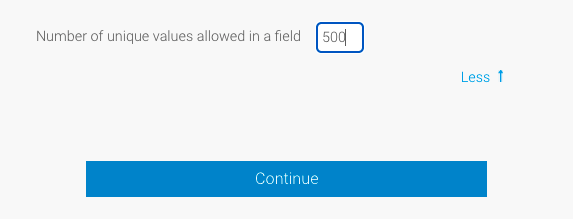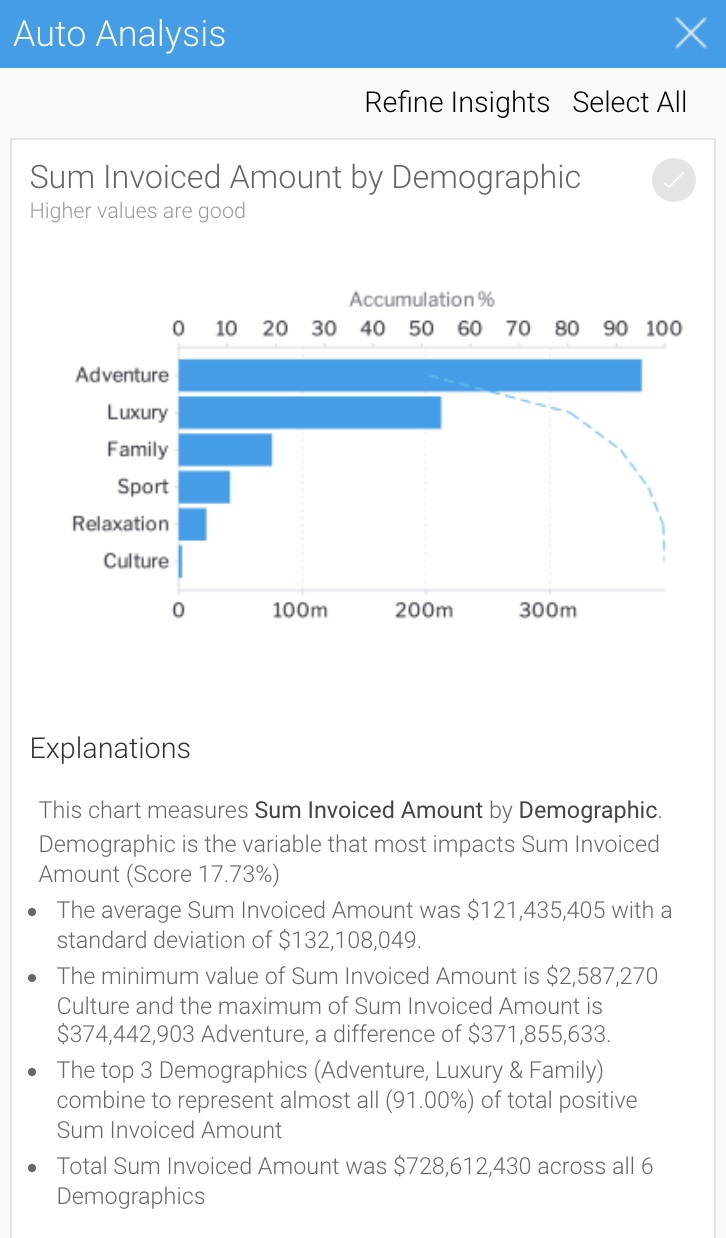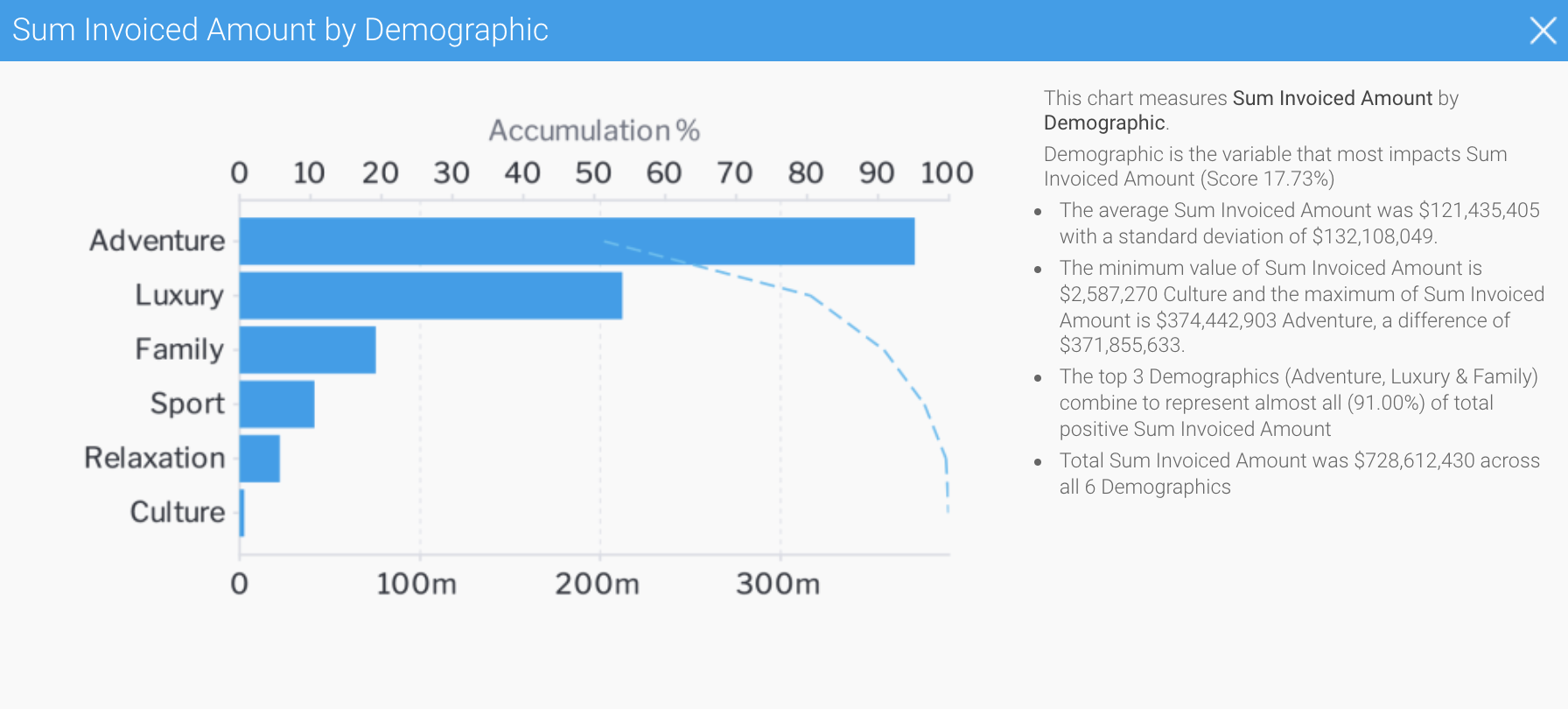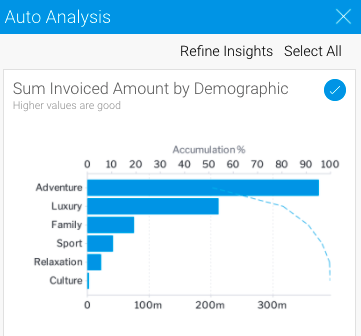Page History
...
The Insight Wizard contains the following options:
| Option | Description |
|---|---|
| Explain Metric | Select this option to better explain a single metric. Yellowfin will identify related data that influences the chosen metric. |
| Compare Metrics | Select this option to compare the values and drivers of two chosen metrics. For example, comparing Actual Revenue (metric) to Planned Revenue (metric). |
| Compare Dates | Select this option to compare a single metric across two time periods. You will need to configure the following information using the dropdown menus:
For example, comparing Actual Revenue (metric) for Sales Date (date field) from this year to last year (time periods). |
| Compare Dimensions | Select this option to compare a metric across two dimensions. You will need to configure the following information using the dropdown menus:
For example, comparing Invoiced Amount (metric) between Regions (dimension) Asia and Europe (dimension values). |
| Higher values are | Select whether higher numeric values are ‘good’ or ‘bad’ for the analysis result. For example, a higher profit margin value is typically good, but a high cost value is typically bad. |
| Fields to Analyze | Select or deselect specific fields to narrow down the analysis. For example, remove any fields that are not likely to be relevant, such as Date of Birth. Removing fields can help to improve the processing time of your analysis. |
Number of unique values allowed in a field | Set the maximum number of values for Yellowfin to include in the analysis. For example, setting the value at 500 for will only include the first 500 values for the selected fields. |
| Tip |
|---|
Assisted Discovery must be configured at the view level by an admin before making it available to users. |
...
| Styleclass | ||
|---|---|---|
| ||
Using Assisted Discovery
Note: the Report Builder toolbar has been updated in recent versions of Yellowfin. Images in this section depict the legacy toolbar that was present in versions 9.12 and earlier.
This guide outlines how to perform Assisted Discovery when building reports.
Click the Create button and click Report to create a new report
Use your mouse to drag your data from the left panel to the Columns fields
To activate Assisted Discovery for a chart, select at least 1 metric and 2 dimensions- Click on the Smart Analysis button on the report builder toolbar
The Insight Wizard dialog box will appear, allowing you to customize your discovery - From the left dropdown, select Explain Metric as the type of analysis you would like to perform
Selecting this option will allow Yellowfin to discover the drivers for a single metric, or compare metrics and dimensions to understand differences - Expand the Advanced Settings option
The Insight Wizard allows you to apply additional preferences to your chart - Click the Higher values are dropdown, and select Good to provide the context for Yellowfin that higher values in your data are considered to be desirable
- Select all fields within the Fields to Analyze box you would like Yellowfin to analyze
You can deselect or select any fields you to wish to either narrow down or expand the scope of the analysis - Set the maximum number of unique values allowed in the fields
In this case, we only want the first 500 unique field values included in the analysis - Click on the Continue button to perform the analysis
The Auto Analysis panel will appear in the report builder on the right-hand side of the screen, displaying the results of the analysis
Yellowfin will generate a natural language analysis, and also display the most appropriate charts for your insights (depending on the data) - Click on the chart to view an enlarged versions
- Click on the round tick button in the top right-hand corner to select or deselect each insight to save to the chart builder
You can go back to the Insights Wizard to choose a different type of analysis option by clicking on the Refine Insights button - Click Charts in the toolbar to proceed to the chart builder
The chart builder will be displayed, allowing you to view and edit the charts you selected from the Auto Analysis panel
You can view any unselected automated charts by clicking on the Insights button on the right-hand side of the screen
...
- Open a published report with Assisted Discovery auto analysis applied
- Click on Data in the report builder toolbar and add or remove metrics or dimensions to the Columns field for that report
- Click on the Smart Analysisbutton on the report builder toolbar
A popup alert will appear
- Click No to retain your previous insights and cancel the Smart Analysis request, even though the data set has changed
The report builder will be displayed, and previously saved insights will remain - Click the Insights button on the right-hand side of the screen to view previously saved insights
Note that your previous insights will remain in the Auto Analysis panel - Click the Insights button on the right-hand side of the screen to close the Auto Analysis panel
- To develop new insights from the new data set, click on the Smart Analysis button on the report builder toolbar
A popup alert will appear - Click Yes to delete the current insights and begin the process from scratch
Previously saved insights from the Auto Analysis panel will remain in the chart builder, but all other insights in the panel will be deleted
| Styleclass | ||
|---|---|---|
| ||
...

